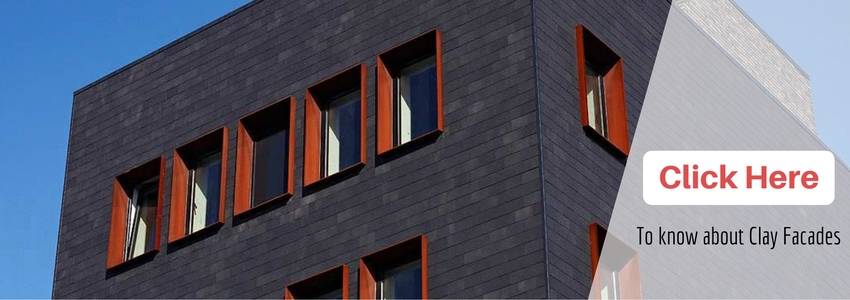Facades and building envelopes determine visual identity, character, and expression of architecture. The design and aesthetic of the building skin imparts a unique character to it, along with the appeal it is a major parameter for the building’s internal performance. Façade in a building is placed at the intersections of the interior and exterior environment, these play an integral part of the building aesthetics as well as the performance of the structure. When facades are designed, an integrated practice of rational and intuitive approach is followed, this is where disciplines unite and science meets art.
The digitization of production and technological resources connected to the development of increasingly sophisticated tools has a direct impact on the modern practice of architecture and urbanism. Amongst the tools available today, one of the most extensive resources is the incorporation of parameterization in design stages. And as correctly guessed, here we are indicating towards Parametric Façade designing in architecture.
Parametric Façade In Architecture – 7 Things For Your Interests
 Here are 7 things that could hold your interest:
Here are 7 things that could hold your interest:
#1 – Parametric Design – Definition
It is very hard to define Parametric designs in just a few words, and googling leads to vague explanations which in most cases sound abstract.
Now, for example, Wikipedia says Parametric design is – “a paradigm in design where the relationship between elements is used to manipulate and inform the design of complex geometries and structures.” This is precise but not that upfront, and leaves most of us rubbing our heads.
#2 – Parametric Façade In Architecture
The word combination “parametric facade” –is normally associated with complex shapes and curved geometry. But parametric definitions can be used for material optimization or simply better and faster impression of the possible design iterations while designing more traditional, rectangular facades. Parameterization makes things much easier as it allows the integration of envelope, shape, and performance variables in one single and transparent process.
Parametric design for façade is the application of computational strategies to the design process. While designers traditionally rely on experience and intuition to solve complex design problems, the computational design aims to enhance that process by encoding design decisions using computer power and language. And, the result is a graphic representation of the steps required to achieve the end designs.
#3 – Why Parametric Design Is Changing Architecture
 Here are a few reasons how parametric design is changing Architecture:
Here are a few reasons how parametric design is changing Architecture:
- Brings Advantages In Both Aesthetics And Functionality
- Capability to produce flexible designs
- 3D solid models offer a vast range of ways to view the model
- Better product visualization, as you can begin with simple objects with minimal details
- Better integration with downstream applications and reduced engineering cycle time
- Existing design data can be reused to create new designs
- Quick design turnaround, increasing efficiency
- Create design iterations extremely fast
- Seamlessly integrate modifications/updates with other project files
But, it hasn’t all been positive always; we will discuss the other side too in the latter part of the blog.
#4 – Parametric Designing Isn’t New
You may think Parametric is a new buzzing word in the field of architecture, but that is not right. This approach was adopted in the 1940’s where an Italian architect, Luigi Moretti demonstrated the design of a stadium where the form of the stadium was derived by manipulating 19 parameters including viewing angles and the economic cost of concrete. Also, much earlier, Antonio Gaudi adopted this approach in the Sagrada Familia project by building an upside-down model as a design process where the input parameters used were the length of the string, birdshot weight, and anchor points. Vertex location on the string was the outcome of the model based on the function of gravity.
Interesting isn’t it?
#5 – Parametric Façade Designing – Indian Scenario
In India, this algorithmic approach has seen great acceptance – the credit goes to India’s ever-booming market. Factors like the influence of internationally renowned architects practicing in India, technological updates, and ease in availability of information will lead to adopting this approach more and more. Many renowned architectural firms have already adopted this approach, and; Parametric design is also being taught in architectural schools. Workshops, online training programs are being conducted widely for students and professionals.
#6 – Constraints That Come Along
Collection of extensive data, setting relations between spaces, strong knowledge in mathematics and Computer science, the huge initial investment in various prototyping and manufacturing machines are a few of the constrictions for design labs intending to adopt this approach. Also, market acceptance and availability of skilled labour with training to work on the end product of this sophisticated tool is another major constraint.
Read: Top 6 Advantages Of A Perforated Brick Façade
#7- Gallery – Examples of Parametric Façades
See below for selected projects that form a set of façades proving the infinite possibilities that the use of parameterization represents for the design of buildings.
Final Words
Nature for years has served as inspiration for architects and designers. Today, Computer technology has given designers and architects the necessary tools to analyze and simulate the complexity observed in nature and apply it to building structures that speak out perfection and endless possibilities. Parametric Façade designing is one such gift, we hope you liked reading this blog.
Read: Modern Facade Materials for Home Aesthetics
Authored by a building expert from Wienerberger India
For any kind of assistance or tips on green building materials – drop us a word at gosmartbricks@gmail.com
Acknowledgment and appreciations go to Archdaily for the information and images contained in this article.















